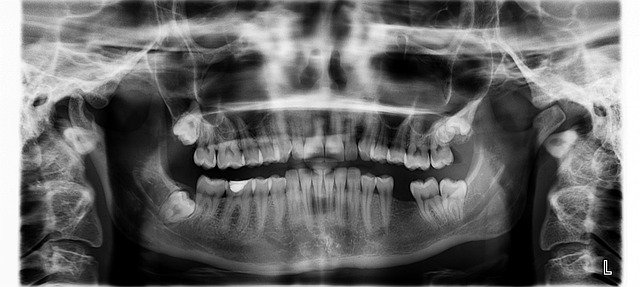Explore cost assistance for ibrance therapy
Facing breast cancer treatment comes with emotional, physical, and financial challenges. For patients prescribed Ibrance (palbociclib), a targeted therapy for certain types of breast cancer, cost concerns can add significant stress to an already difficult journey. This medication, while effective for many patients with hormone receptor-positive, HER2-negative advanced or metastatic breast cancer, often comes with a substantial price tag that can be overwhelming without proper financial assistance. Understanding the various support options available can help patients access this important treatment while managing their financial wellbeing.

Understanding Financial Resources for Ibrance Treatment
Ibrance (palbociclib) is an oral medication taken in combination with an aromatase inhibitor or fulvestrant to treat specific types of advanced or metastatic breast cancer. As a specialty medication, its costs can be significant even for patients with insurance coverage. Financial resources for Ibrance treatment typically fall into several categories: manufacturer assistance programs, foundation support, insurance navigation assistance, and government programs. The manufacturer of Ibrance, Pfizer, offers patient assistance programs specifically designed to help eligible patients access their medication with reduced financial burden. These programs may provide the medication at no cost or at a significantly reduced price depending on the patient’s situation.
General Cost Considerations for Ibrance
Without insurance or financial assistance, Ibrance can cost approximately $13,000-$15,000 per month, making it financially prohibitive for many patients. Even with insurance coverage, out-of-pocket expenses through copays and coinsurance can reach thousands of dollars monthly. Several factors influence the final cost a patient might face:
-
Insurance type and coverage level
-
Deductible and out-of-pocket maximum amounts
-
Medicare Part D or private insurance formulary tier placement
-
Duration of treatment (typically taken in 28-day cycles)
-
Dosage prescribed (125 mg, 100 mg, or 75 mg)
Understanding these variables helps patients better prepare for potential costs and identify which assistance programs might be most beneficial for their specific situation.
Prices, rates, or cost estimates mentioned in this article are based on the latest available information but may change over time. Independent research is advised before making financial decisions.
Available Assistance Programs for Ibrance
Several dedicated assistance programs can help make Ibrance more affordable:
-
Pfizer Patient Assistance Program: Provides eligible uninsured and underinsured patients with Ibrance at no cost if they meet income qualifications.
-
Pfizer Oncology Together: Offers benefits verification, prior authorization assistance, appeals support, and connects patients with financial resources.
-
Pfizer Savings Card: For commercially insured patients, this program can reduce out-of-pocket costs to as little as $0 per month, with a maximum annual benefit of $25,000.
-
Medicare Extra Help: Also known as the Low-Income Subsidy (LIS) program, this assists qualifying Medicare beneficiaries with prescription drug costs.
-
State Pharmaceutical Assistance Programs (SPAPs): Some states offer additional assistance for prescription medications to residents who meet certain criteria.
| Assistance Program | Eligibility | Potential Benefit |
|---|---|---|
| Pfizer Patient Assistance Program | Uninsured or underinsured with income constraints | Free medication |
| Pfizer Oncology Together | All Ibrance patients | Support services and financial resource connections |
| Pfizer Savings Card | Commercially insured patients | $0 copay (up to $25,000 annually) |
| Medicare Extra Help | Medicare recipients meeting income requirements | Reduced costs for prescriptions |
| State Pharmaceutical Assistance | Varies by state | Varies by program |
Prices, rates, or cost estimates mentioned in this article are based on the latest available information but may change over time. Independent research is advised before making financial decisions.
Alternative Resources and Programs
Beyond manufacturer-specific programs, patients may find additional support through:
Patient Advocacy Organizations: Groups like CancerCare, Patient Advocate Foundation, and the American Cancer Society offer grants and assistance programs for cancer patients struggling with treatment costs. These organizations can provide grants ranging from several hundred to a few thousand dollars to help with medication costs.
Independent Charitable Foundations: Organizations such as the Patient Access Network Foundation, HealthWell Foundation, and Good Days provide financial assistance specifically for cancer medications including Ibrance. These foundations often open and close enrollment periods based on available funding, so patients should apply promptly when programs are open.
Hospital and Cancer Center Financial Aid: Many treatment facilities have financial counselors who can help identify local resources, payment plans, or institutional financial assistance programs that might reduce the overall cost of care, including medication expenses.
Clinical Trials: For eligible patients, participating in a clinical trial that includes Ibrance might provide access to the medication at no cost as part of the research protocol. While not primarily a financial solution, this can be beneficial for appropriate candidates.
Learn More About Financial Support for Ibrance
The journey to finding appropriate financial support requires persistence and thorough research. Patients should begin the process as soon as Ibrance is prescribed, as some assistance programs take time for approval and implementation. The oncology care team, particularly oncology social workers and financial counselors, can be invaluable resources in navigating available options.
Some strategies for maximizing support include:
-
Contact Pfizer Oncology Together (1-877-744-5675) as a starting point
-
Request help from the healthcare provider’s financial counseling department
-
Keep detailed records of all conversations with insurance and assistance programs
-
Submit applications to multiple assistance programs simultaneously
-
Consider all medication options if financial barriers persist
-
Regularly check eligibility for programs as financial circumstances change
Understanding these resources and being proactive about seeking assistance can significantly reduce the financial burden of Ibrance treatment, allowing patients to focus on their health and recovery rather than financial concerns.
This article is for informational purposes only and should not be considered medical advice. Please consult a qualified healthcare professional for personalized guidance and treatment.




